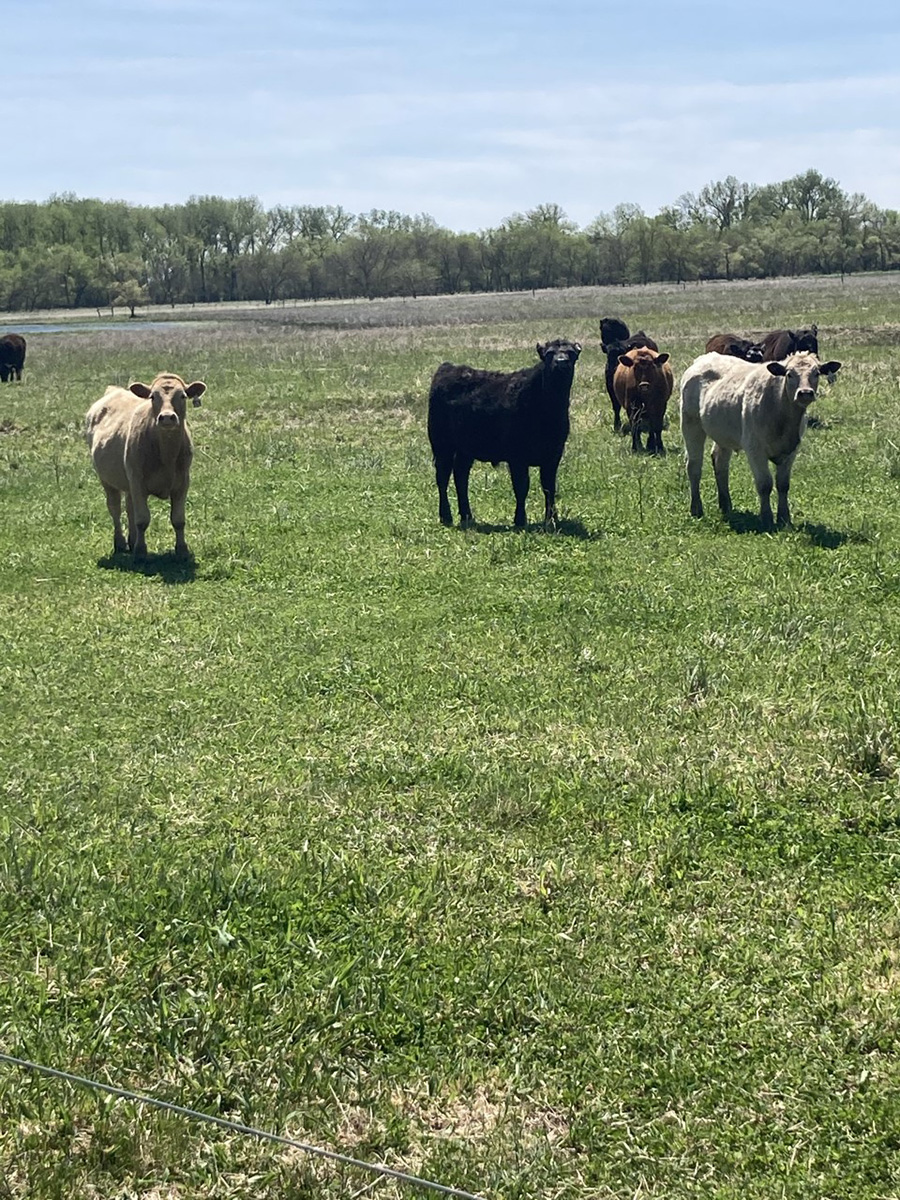
By Connor Biehler, Beef Systems Extension Educator
Spring green-up is currently occurring and soon yearling cattle will find their way to the grass pastures of the great plains for summer grazing. Cattle are stocked on grass pasture this time of year due to its additional nutritive quality that equates to gains prior to entering the feedlot. One economically justifiable way to make stocker cattle more efficient on grass is by administering implants. Utilization of implants in stocker cattle can increase average daily gain by 5–20%, improve feed efficiency by 5–15% and improve lean tissue deposition by 5–12%.
Implants are natural or synthetic hormones released into the blood that increase growth hormone secretion in cattle. Naturally occurring hormones include estradiol, progesterone and testosterone, whereas synthetic hormones are analogs of the natural hormones with greater activity. Depending upon brand and product, implants vary in dosage level and payout period (lifespan of active ingredient). The potency of an implant must correlate with the energy level of the diet. High-potency implants should be used for cattle on high energy, feedlot diets. Stocker cattle on grass are not consuming the energy content equivalent to the greater dosages of high-potency implants, thus do not require high-dosage implants.
Implant strategies should be selected based on potency — for terminal cattle on grass, only use implants approved for grazing cattle. Multiple brands and varieties that contain active ingredients either singularly or in various combinations are available on the market. The proper implant should be tailored to the production goals of the cattle. Spring green-up through the summer provides sufficient energy to support protein deposition for the increasing gains that would be expected from a moderately-potent implant. Meaning that a lower-potency implant may not offer the best return on your dollar when forage quality is at its highest early in the summer. Adversely, later in the summer, or in years with moderate to severe drought conditions, nutrient intake may decline due to quality of forage, and a moderately potent implant could lack the capability to function to its fullest abilities.
The payout for common implants compatible for stocker cattle is usually around 100 days, although some can payout much longer. Summer grazing usually lasts around 120 days. If cattle are implanted when they are processed going onto summer pasture, there will be about a 20-day period where the implant is no longer paying out. Forage quality and quantity are decreasing at this time so one option for producers would be to not re-implant when quality and quantity of forage begin to dwindle because cattle are not going to meet the nutrient requirements for the implants to be as efficient as they possibly could be. The cost of implanting along with the time and effort it takes to gather the cattle might not be worthwhile when weighing the options.